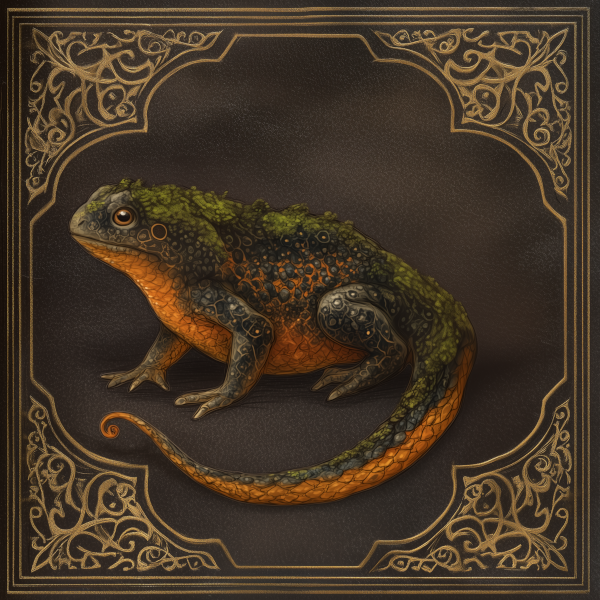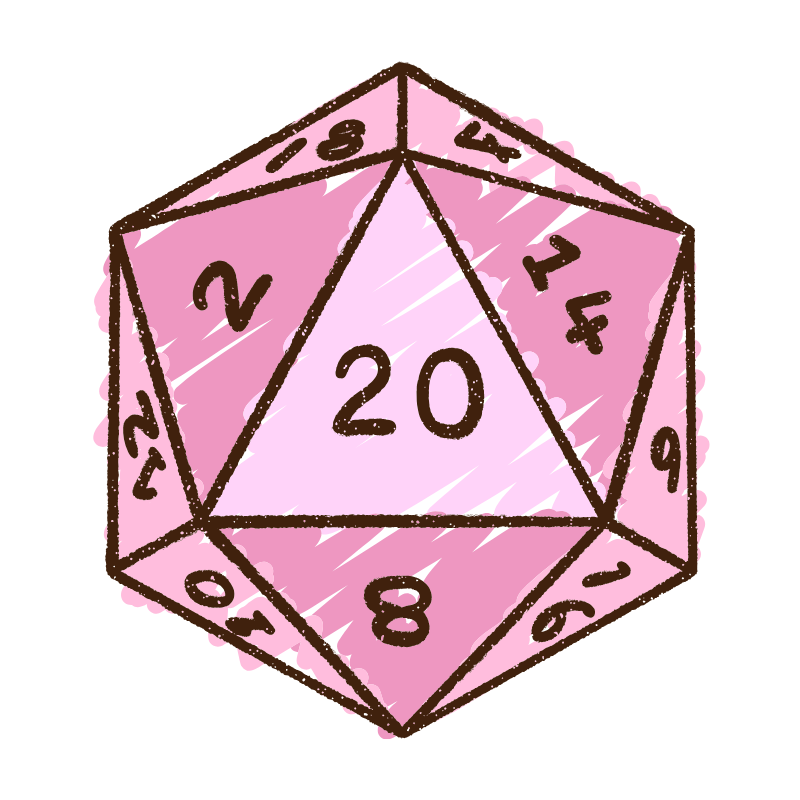Mossfire Hopper
(incomplete work in progress)
Found primarily throughout the Virelande wetlands, the Mossfire Hopper is known to apothecaries and herbalists everywhere. Its secretions, or "sap" have mild anesthetic properties that are of great value.
Appearance
Males:
Brighter, more vibrant orange bellies—used in mating displays and territorial signaling.
More pronounced mossy skin patches, sometimes with tiny, flickering bioluminescent spots during breeding season (a subtle glow to attract females).
Slightly slimmer body but longer limbs for agile courtship movements and calling postures.
Males produce distinctive croaking and rustling calls to advertise presence and fitness.
Females:
Duller, more muted orange or yellowish bellies, blending better with moss and leaf litter for camouflage—important since they spend more time guarding eggs and nesting sites.
Mossy patches are present but less vibrant and extensive.
Slightly stockier body, built for egg production and carrying.
Quieter and less flashy—rely more on stealth and camouflage than display
The skin patches exude a thick, slightly luminescent mucous known as Mossfire Sap
Habitat
-Prefers mild to warm climates, ideally 15°C to 30°C (59–86°F)
-Temperate to subtropical wetlands — especially warm swamps, peat bogs, marshy forests, or slow-moving rivers with seasonal flooding.
-Needs rich, mossy cover, rotting logs, and soft silt beds — essential for laying eggs and camouflage.
-Cold winters below freezing are a no-go — they’ll die off or go into deep hibernation and lose sap potency.
-High humidity and regular rainfall are essential.
-Needs standing water for part of its lifecycle (tadpoles), but also damp forest floor or bog for adult form.
-Flood cycles may trigger mating season and sap production.
Diet
-Insects and small invertebrates
Common staples: flies, mosquitoes, moths, beetles, ants, dragonflies.
Larvae and pupae found in wetlands, like mosquito larvae or caddisflies.
-Aquatic invertebrates
Small crustaceans (like freshwater shrimp or amphipods).
Worms, aquatic insect larvae, small snails.
-Small amphibians or fish fry (occasionally)
Life cycle
-Most active (and most potent) in late spring through early autumn.
-During the cold/dry season, they go into aestivation or partial dormancy, hiding in deep moss beds or hollow roots.
1. Breeding Season
Occurs in late spring through early summer, triggered by rising temperatures and increased water levels in the Virelande wetlands.
Males perform vivid displays showing off their fiery orange bellies and mossy patches to attract females.
Mating calls are a mix of soft croaks and subtle rustling sounds, blending with the wetland ambiance.
2. Egg Laying
Females lay clusters of eggs attached to submerged moss or aquatic plants in shallow pools.
Eggs are gelatinous and translucent, camouflaged by moss, reducing predation.
3. Larval Stage
Eggs hatch into aquatic tadpoles that feed on algae, small invertebrates, and detritus in the water.
Tadpoles develop over 6–8 weeks, gradually growing limbs and absorbing their tails.
4. Metamorphosis
Transition from tadpole to juvenile frog-newt hybrid involves dramatic physical changes:
Development of mossy skin patches and bright orange belly coloring begin.
Lungs fully develop for terrestrial life, but they retain strong swimming ability.
Limbs strengthen, tail shortens but remains for swimming and balance.
Metamorphosis is stressful; the hopper becomes vulnerable to predators and environmental changes during this period.
5. Juvenile Phase
Young hoppers spend several months exploring shallow wetlands and mossy banks.
Their coloration and moss patches gradually intensify over 1–2 years, reaching full adult appearance and sap potency.
6. Maturity and Sap Production
Sap glands develop fully at sexual maturity (around 2 years).
Sap production peaks during the breeding season and is linked to hormone cycles.
Adults are territorial during this time, using sap in territorial displays and mating rituals.
Harvesting Methods
The sap is produced by the skin glands during the Mossfire Hopper’s adult stage — specifically in the breeding season, when their colors are most vibrant.
The secretion helps:
Protect the skin during territorial fights.
Attract mates (there’s a faint musk or glow that draws others in).
Skilled foragers gently coax the sap using warmed moss
Collection is done during the molting phase
The best gatherers never fully drain a hopper — they know it can stress or “dull” the creature.
Scientific Name
Anuramandra viridignis
Average Weight
3.5–5 ounces
Average Length
5–6 inches (Incl. tail)
Geographic Distribution





Hi there! A great concept for a toad species. I enjoyed working through your article and selected it for inclusion in my 2025 Summer Camp Reading Challenge article. Feel free to read more at
2025 Summer Camp Reading Challenge
WIP - The Chaos Bringer: A Dark Fantasy BG3 FF
"Thou dost not meddle in the affairs of dragons, lest thou be chewed in self-defense..."